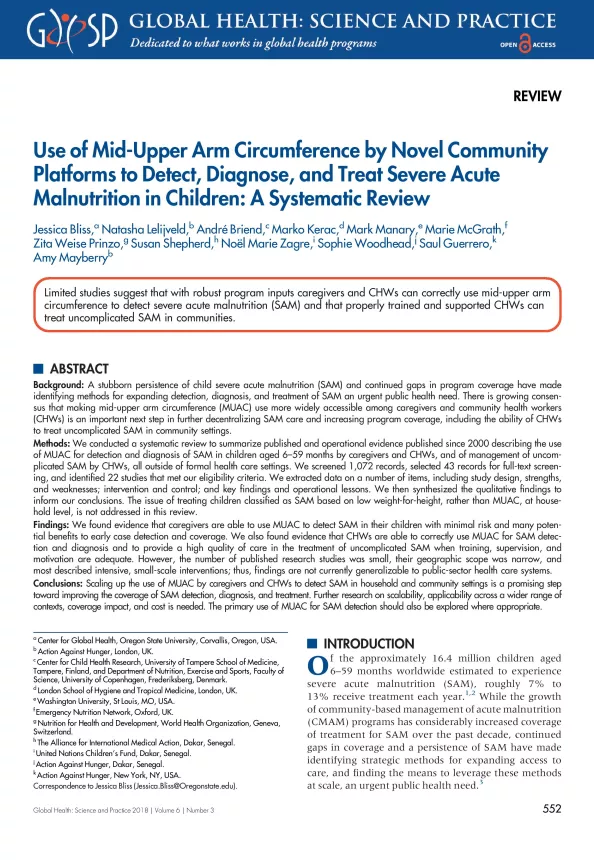Use of Mid-Upper Arm Circumference by Novel Community Platforms to Detect, Diagnose, and Treat Severe Acute Malnutrition in Children: A Systematic Review
Publication details
Abstract
Background
A stubborn persistence of child severe acute malnutrition (SAM) and continued gaps in program coverage have made identifying methods for expanding detection, diagnosis, and treatment of SAM an urgent public health need. There is growing consensus that making mid-upper arm circumference (MUAC) use more widely accessible among caregivers and community health workers (CHWs) is an important next step in further decentralizing SAM care and increasing program coverage, including the ability of CHWs to treat uncomplicated SAM in community settings.
Methods
We conducted a systematic review to summarize published and operational evidence published since 2000 describing the use of MUAC for detection and diagnosis of SAM in children aged 6-59 months by caregivers and CHWs, and of management of uncomplicated SAM by CHWs, all outside of formal health care settings. We screened 1,072 records, selected 43 records for full-text screening, and identified 22 studies that met our eligibility criteria. We extracted data on a number of items, including study design, strengths, and weaknesses; intervention and control; and key findings and operational lessons. We then synthesized the qualitative findings to inform our conclusions. The issue of treating children classified as SAM based on low weight-for-height, rather than MUAC, at household level, is not addressed in this review.
Findings
We found evidence that caregivers are able to use MUAC to detect SAM in their children with minimal risk and many potential benefits to early case detection and coverage. We also found evidence that CHWs are able to correctly use MUAC for SAM detection and diagnosis and to provide a high quality of care in the treatment of uncomplicated SAM when training, supervision, and motivation are adequate. However, the number of published research studies was small, their geographic scope was narrow, and most described intensive, small-scale interventions; thus, findings are not currently generalizable to public-sector health care systems.
Conclusions
Scaling up the use of MUAC by caregivers and CHWs to detect SAM in household and community settings is a promising step toward improving the coverage of SAM detection, diagnosis, and treatment. Further research on scalability, applicability across a wider range of contexts, coverage impact, and cost is needed. The primary use of MUAC for SAM detection should also be explored where appropriate.

